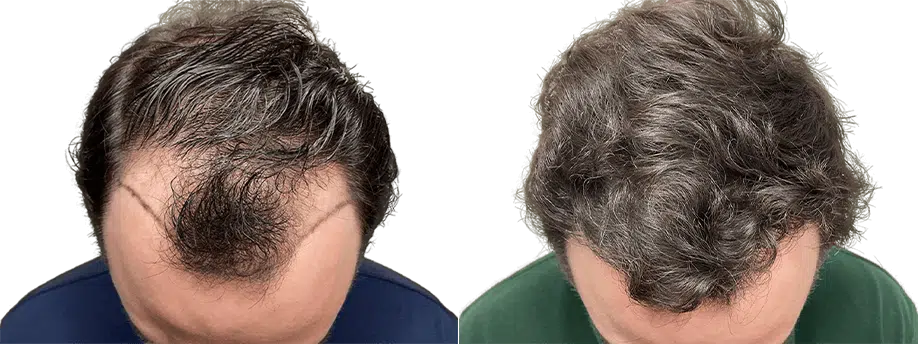Does your hair transplant donor area hair thin with age?
Hair transplantation is a popular and effective solution for those dealing with hair loss. However, one common concern among individuals considering or who have undergone a hair transplant is whether the hair in the donor area, typically the back of the scalp, will thin with age. In this article, we’ll explore the dynamics of hair in the donor area and whether it’s prone to thinning over time.
Table of Contents:
- Understanding the Hair Growth Cycle
- The Donor Area
- Donor Area Hair Characteristics
- Natural Aging Process
- Long-term Results
- Maintenance and Care
- Donor Area Scarring
- Ethnic and Genetic Variations
- Hair Maintenance Post-Transplant
- Final opinion
Understanding the Hair Growth Cycle
To answer this question, it’s essential to understand the basics of the hair growth cycle. Hair goes through stages: anagen (growth), catagen (transitional), and telogen (resting). Each hair follicle operates independently, cycling through these phases at different times. When a hair is in the telogen phase, it sheds naturally, making way for new hair to grow.
The Donor Area
In hair transplantation, the donor area is carefully selected because the hair in this region is genetically resistant to the hormone DHT, which is primarily responsible for pattern hair loss. This characteristic makes the donor area hair ideal for transplantation as it retains its resistance to DHT even when moved to the recipient area, which is susceptible to hair loss.
Donor Area Hair Characteristics
Donor area hair is usually taken from the sides and back of the scalp because it tends to be more resilient and stable throughout a person’s life. Unlike the hair in the recipient area, which may be prone to thinning, the donor area’s hair tends to maintain its thickness and density even as one ages.
Natural Aging Process
As people age, some hair thinning is expected, but this thinning is generally more pronounced in the areas where pattern hair loss occurs, such as the front and crown of the head. The donor area, due to its genetic resistance to DHT, is less affected by age-related thinning. Therefore, it remains a reliable source of healthy and robust hair for transplantation.
Long-term Results
Hair transplant results can be permanent and natural-looking because the donor area’s hair typically maintains its characteristics throughout life. This means that even as you age, the transplanted hair in the recipient area should continue to grow just like the donor hair, preserving the aesthetic benefits of the procedure.
Maintenance and Care
While the donor area hair may remain resistant to DHT-induced hair loss, it’s essential to continue regular hair care and maintenance to keep the entire scalp healthy. Proper nutrition, a healthy lifestyle, and avoiding excessive stress can contribute to overall hair health and longevity.
Donor Area Scarring
One aspect to consider when discussing the donor area is scarring. While the hair in the donor area doesn’t typically thin with age, the method of hair extraction can leave scars. Modern hair transplant techniques like Follicular Unit Extraction (FUE) and Follicular Unit Transplantation (FUT) aim to minimize scarring, but some individuals may still develop noticeable scars. However, these scars are usually well-hidden by surrounding hair.
Ethnic and Genetic Variations
It’s worth noting that the characteristics of the donor area can vary between individuals, particularly among people of different ethnic backgrounds. Some individuals may have thicker donor hair, while others may have finer hair. Your hair transplant surgeon will assess your unique hair characteristics and provide personalized recommendations based on your specific needs.
Hair Maintenance Post-Transplant
Post-transplant care is vital for maintaining the long-term results of a hair transplant. It’s essential to follow your surgeon’s instructions, which may include specific shampoos, medications, and regular check-ups. These measures can help ensure the continued health and vitality of your transplanted and existing hair.
Final opinion
The hair in the donor area for hair transplantation tends to remain resistant to age-related thinning due to its genetic characteristics. Therefore, individuals who have undergone a hair transplant should expect their transplanted hair to maintain its density and thickness as they age. However, it is crucial to continue with proper hair care and maintenance to ensure the best long-term results.
References:
- Bernstein, R. M., & Rassman, W. R. (2015). Follicular Unit Extraction: Minimally Invasive Surgery for Hair Transplantation. CRC Press.
- Shapiro, R. L., & Unger, W. P. (2004). Hair Transplantation. Marcel Dekker, Inc.

